Among all types of turtle pets, aquatic turtles are the easiest to keep, followed by semi-aquatic turtles. When it comes to tortoises, the difficulty of breeding them has suddenly increased. Issues such as temperature, humidity, and stones in the body need to be considered, which is a headache. Do you know how to properly care for a tortoise? What types of tortoises should be kept and what should be paid attention to in their care. This article will list for you the top ten most difficult to breed tortoise species in the world: Indian star tortoise, concave-armored tortoise, fold-backed tortoise, sulcata tortoise, leopard tortoise, boot-footed tortoise, spider web tortoise, Cracker tortoise, Burmese tortoise and European tortoise, etc. If you don’t have some experience in raising turtles, it may be wiser to give up breeding these species!

1. Indian Star Turtle
The Indian star tortoise, also known as the Indian star tortoise, star tortoise or earth tortoise, is a reptile belonging to the family Chestidae and the genus Elephantidae. They are widely distributed in India, Pakistan, Sri Lanka, Syria, Iraq and other regions. In 1997, China introduced a limited number of Indian star tortoises.
The carapace of the Indian star tortoise is dark black, and each scute has light yellow radial stripes, which are like stars in the night sky. It is very beautiful, so it is loved by many tortoise lovers. They like to live in flat grassy areas and prefer foods such as fruits, prickly cacti, plants with thick stems and leaves, and thistles. In captivity, Indian star tortoises can live a lifespan of 30 to 50 years.
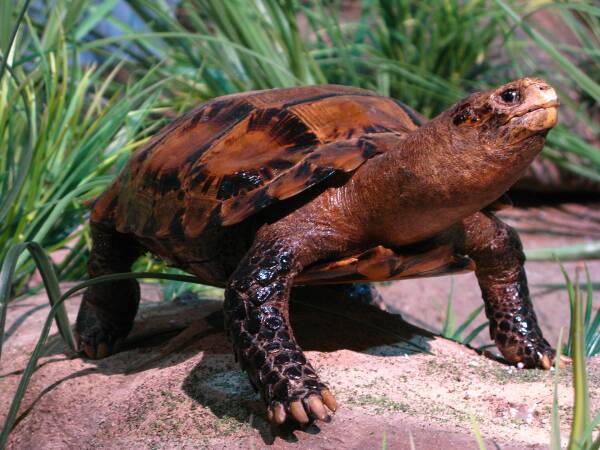
2. Concave-shelled tortoise
The unicorn tortoise, also known as the unicorn tortoise, belongs to the family Chestidae and the genus unicorn tortoise. They are listed as first-level protected species in the "List of Key Nationally Protected Wild Animals in China". The concave tortoise is mainly distributed in countries such as Laos, Malaysia, Myanmar, Thailand, Vietnam, Cambodia and China, and lives in tropical and subtropical mountainous areas.
Adult concave tortoises like to live on the shore next to mountain streams, while young turtles can climb up tree trunks on the shore to bask in the sun. They mainly feed on bamboo shoots, young grasses and fruits. This lovely concave-armored tortoise is a precious biological resource on the earth. We must work together to protect their habitat and allow them to continue to thrive in nature.
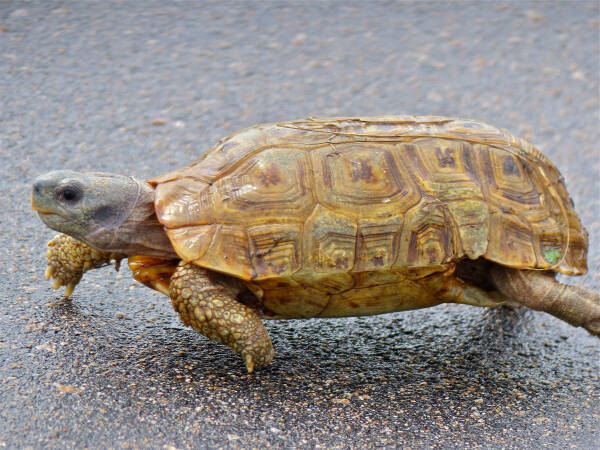
3. Foldback turtle
Foldback tortoises are widely distributed in the central continent of Africa. They have a common feature, which is that the back half of the carapace has joints and can be folded. This feature, used to protect the hind limbs and tail when encountering an enemy, is very unique among all turtles. There are some differences between male and female foldback tortoises.
First of all, they can be distinguished by their tails, which are thicker in males and shorter in females. In addition, males also have depressions in their plastron. In addition, the male bell tortoise has a strong sense of territory. It is best to only raise one male tortoise when raising, otherwise there may be fierce conflicts during the breeding period.
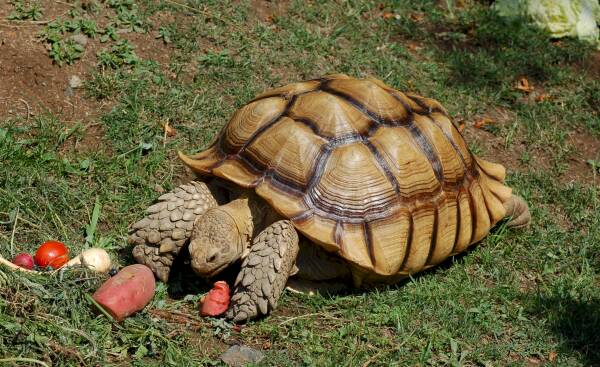
4. Sulcata giant tortoise
The Sulcata tortoise, whose scientific name is Geochelone sulcata, is also known as the Sulcata giant tortoise and the Sulcata tortoise. It is a very active tortoise. Their carapace has a higher bulge, there are symmetrical large scales on the top of their head, their skulls are short, the squamous bones are not connected to the parietal bones, the frontal bones may not enter the orbital fossa, and the postorbital bones degenerate or almost disappear; the rear part of the square bone is usually closed and completely Surrounds the stapes; the maxillary bone is nearly continuous with the quadrate yoke, and the chewing surface of the palate may or may not have a central ridge.
Their dorsal and ventral carapace are closely connected by bony sutures through nail bridges. The limbs are thick and cylindrical. The phalanges and phalanges have no more than two joints, have claws, no webs, and no scent glands. They are herbivores and can survive in drier environments. Sulcata turtles are distributed in Ethiopia, Sudan, Senegal, Mali, Chad and other countries in Africa.
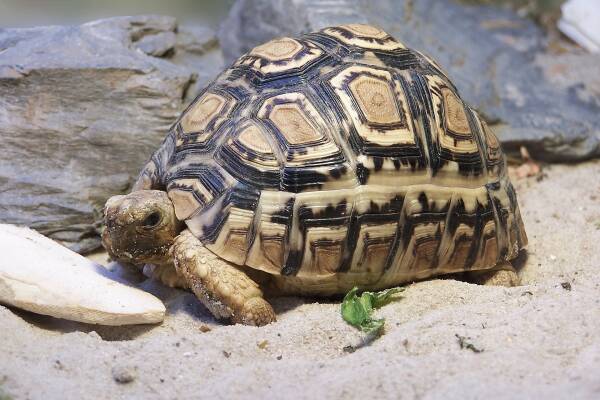
5. Leopard tortoise
The leopard tortoise, also known as the leopard tortoise, belongs to the reptiles of the order Turtles, the family Chestidae, and the genus leopard tortoise. They are a large turtle with distinctive markings and are a species protected by the Convention on International Trade in Endangered Species of Wild Fauna and Flora, the Washington Convention.
The leopard tortoise's carapace is tall and domed, sometimes with a hump on the back. Their skin is usually a creamy yellow, with black spots and stripes marking the carapace, and each turtle also has unique markings. Leopard tortoises are mainly found in southern Africa and are widely distributed in sub-Saharan Africa. They are herbivorous turtles and feed mainly on various herbaceous plants.
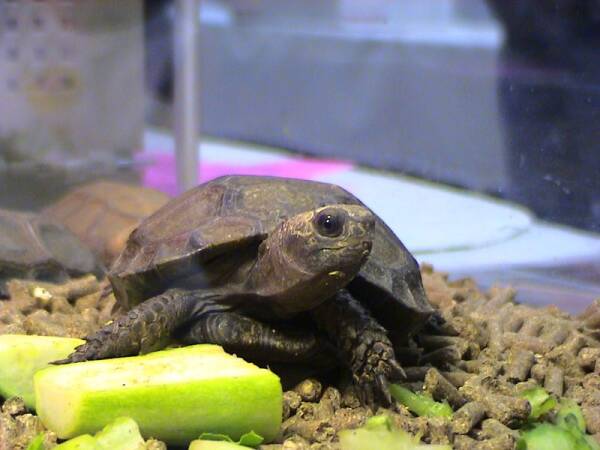
6. Boot-footed tortoise
The boots-footed tortoise, scientific name Manouria emys, is the largest tortoise in Asia and the fourth largest tortoise species in the world. It may be one of the oldest living turtles. Boot-footed tortoises belong to the family Chelonidae. They feed on plants and sometimes invertebrates and frogs. They range from western India to southern Vietnam and as far south as the Malay Peninsula and Sumatra.
The boot-footed tortoise has several small toe-like well-developed scales between its tail and the base of its hind legs. They live in tropical rainforests and prefer areas near streams. Under artificial breeding conditions, boot-footed tortoises can lay about 40 spherical eggs at a time, and the incubation period usually does not exceed 70 days.
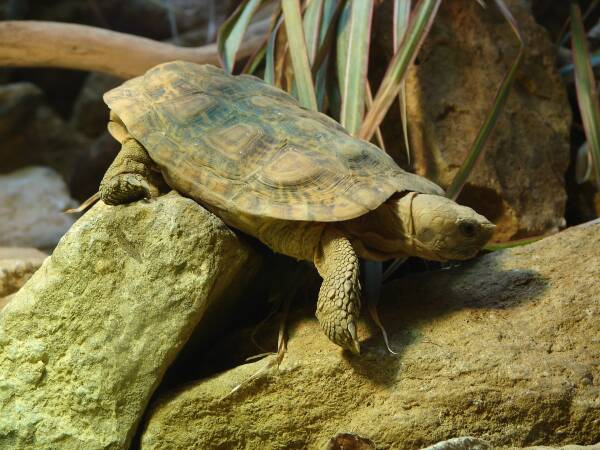
7. Biscuit turtle
The Cracker tortoise is very special in that it has a very flat but beautifully patterned shell. Its breastplate has some large, smooth and soft areas covered with large scutes or grooves in the bony scutes. Pancake tortoises are relatively small, with the length of the tortoise shell usually not exceeding 15 cm (the longest not exceeding 18 cm), and the weight being only about 500 grams. Adult male turtles have longer, fatter tails than female turtles.
The main food of pancake tortoises is grass, and they live in hilly areas with an altitude of up to 1,800 meters. Pancake turtles that live at higher altitudes have adapted to cooler temperatures. Average temperatures in these places are usually around 24-30°C, but can drop as low as 12°C.
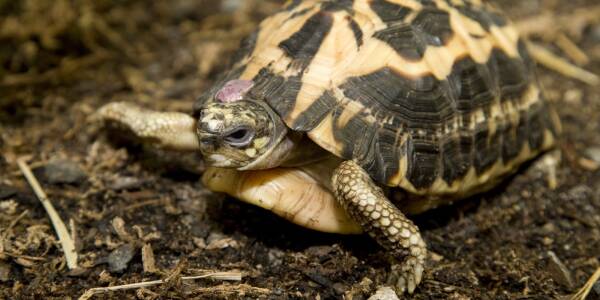
8. Spider-web turtle
Spider tortoise, English name is Common Spider Tortoise, scientific name is Pyxis arachnoides. It is mainly found in the southwestern part of Madagascar. The spider web turtle inhabits the coastal area in the southwest of Madagascar. It is regulated by the oceanic monsoon and the relative humidity in the air is slightly higher. They are mainly active in bushes, but some individuals go deep into the woods.
The spider web turtle is a small tortoise. The carapace of a mature individual is usually about 12-15 cm. Their carapace has a unique glaze-black color and a bright yellow pattern that resembles a mesh. There is a movable hinge joint structure at the junction of the dorsal shield and the thoracic shield.
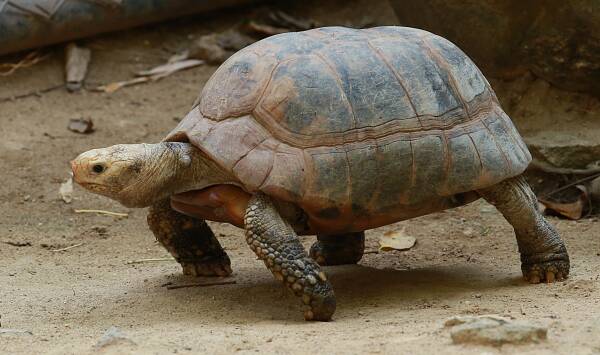
9. Burmese tortoise
Burmese tortoise, also known as dragon-clawed tortoise, dry tortoise, Burmese tortoise, etc., belongs to the genus Indian tortoise in the family Chestidae, and is one of the common tortoises on the market. It is a medium-sized turtle, with an adult weighing about 1 kilogram. The length of the carapace is generally more than 20 centimeters, and the maximum can reach about 40 centimeters. The Burmese tortoise has an oval body shape and a domed carapace.
The Burmese tortoise is a subtropical terrestrial tortoise that mainly inhabits mountains, hills, shrubs and other environments. Their distribution range includes northeastern India, Vietnam, the Malay Peninsula and other places. Burmese tortoises are mainly herbivorous, but they also eat some animal foods.
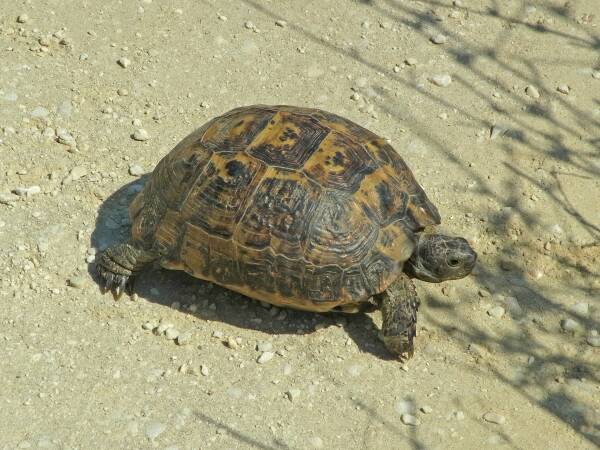
10. European tortoise
European tortoises vary greatly in size and color. They are the second most numerous tortoises among Mediterranean tortoises, after the four-toed tortoises. There is still much controversy over its classification. Generally speaking, European tortoises are highly adaptable and have a wide distribution range. They can hibernate in their native habitat and adapt well in artificial environments. They generally accept a variety of fruits and vegetables and will usually eat them immediately after purchase, so there is little need for an acclimation period.
The length of the plastron of individual European tortoises in the wild is about 10 cm, and the length of the carapace needs to be more than 14 cm in order to breed. The number of eggs laid each time is 4-6, and the incubation period takes about 60-80 days. Compared with other tortoises, this is about half the incubation time.
The ranking of the top ten most difficult to raise tortoises is mainly obtained by searching relevant online platforms to find out the difficulty of raising various tortoises, and taking into account their popularity. If you have any questions, please leave comments/criticisms at the end.
animal tags: tortoise tortoise
We created this article in conjunction with AI technology, then made sure it was fact-checked and edited by a Animals Top editor.